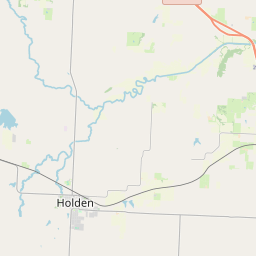Tribute to the Dog
Historical marker location:
308 North Main Street, Warrensburg, Missouri
( Marker is on Main Street south of Gay Street, on the right when traveling south.)







© OpenStreetMap contributors
Senator George Graham Vest. Old Drum 1870
Loading...
Searching for other points of interest within 3 miles of this location.The city of Kansas City, Missouri, is home to the world's largest collection of fountains. It has more than 200 fountains and is known as the "City of Fountains".
About Johnson County
Johnson County Timeline
Johnson County, Missouri, located in the central part of the state, has a rich and diverse history. The county was established on December 13, 1834, and named in honor of Vice President Richard M. Johnson. Prior to European settlement, the area was inhabited by the Osage Nation, who lived off the land and engaged in trade with French traders.
In the early 19th century, settlers began moving into the region, attracted by the fertile soil and opportunities for farming. By the 1830s, Johnson County had become home to several small communities, including Warrensburg, the county seat. The establishment of the Missouri Pacific Railroad in the 1860s contributed significantly to the county's growth and development.
The county played a significant role in the American Civil War, as it was strategically located along important transportation routes. Union and Confederate forces clashed in several battles, including the Battle of Lexington in 1861. After the war, Johnson County experienced a period of rebuilding and growth, with the emergence of new industries such as coal mining and manufacturing.
Today, Johnson County is a thriving community with a diverse economy that includes agriculture, manufacturing, education, and healthcare. The county boasts several historical landmarks and attractions, including the Old Courthouse Museum in Warrensburg, which offers visitors a glimpse into the area's past. Johnson County's history continues to shape its present, as residents work to preserve their heritage while embracing the opportunities of the modern world.
In the early 19th century, settlers began moving into the region, attracted by the fertile soil and opportunities for farming. By the 1830s, Johnson County had become home to several small communities, including Warrensburg, the county seat. The establishment of the Missouri Pacific Railroad in the 1860s contributed significantly to the county's growth and development.
The county played a significant role in the American Civil War, as it was strategically located along important transportation routes. Union and Confederate forces clashed in several battles, including the Battle of Lexington in 1861. After the war, Johnson County experienced a period of rebuilding and growth, with the emergence of new industries such as coal mining and manufacturing.
Today, Johnson County is a thriving community with a diverse economy that includes agriculture, manufacturing, education, and healthcare. The county boasts several historical landmarks and attractions, including the Old Courthouse Museum in Warrensburg, which offers visitors a glimpse into the area's past. Johnson County's history continues to shape its present, as residents work to preserve their heritage while embracing the opportunities of the modern world.
Johnson County Timeline
This timeline provides a condensed summary of the historical journey of Johnson County, Missouri.
- 1834 - Johnson County established as part of Van Buren County
- 1835 - County seat named Chilhowee
- 1837 - County seat moves to Warrensburg
- 1839 - Johnson County officially organized and named after Vice President Richard M. Johnson
- 1848 - Missouri Pacific Railroad reaches Warrensburg
- 1870 - University of Central Missouri established in Warrensburg
- 1871 - Johnson County Courthouse, a three-story brick building, completed in Warrensburg
- 1894 - First oil well drilled in the county, leading to the development of the local oil industry
- 1941 - Whiteman Air Force Base established near Knob Noster
- 1970 - Powell Gardens, a botanical garden, opens in Kingsville
- 1988 - Bristle Ridge Vineyards, the first winery in Johnson County, opens in Warrensburg